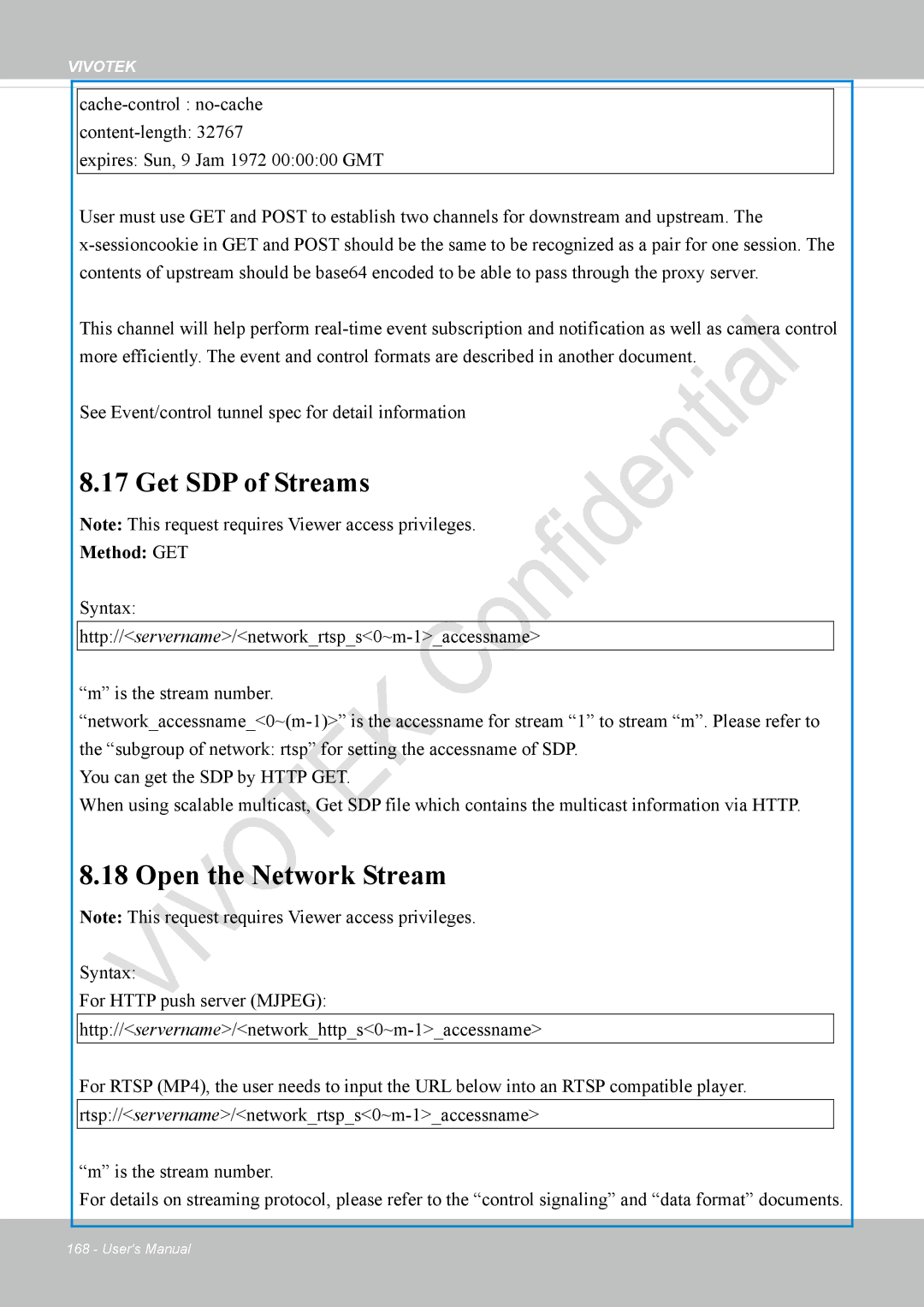
VIVOTEK
expires: Sun, 9 Jam 1972 00:00:00 GMT
User must use GET and POST to establish two channels for downstream and upstream. The
This channel will help perform
See Event/control tunnel spec for detail information
8.17 Get SDP of Streams
Note: This request requires Viewer access privileges.
Method: GET
Syntax:
“m” is the stream number.
You can get the SDP by HTTP GET.
When using scalable multicast, Get SDP file which contains the multicast information via HTTP.
8.18 Open the Network Stream
Note: This request requires Viewer access privileges.
Syntax:
For HTTP push server (MJPEG):
For RTSP (MP4), the user needs to input the URL below into an RTSP compatible player.
“m” is the stream number.
For details on streaming protocol, please refer to the “control signaling” and “data format” documents.
168 - User's Manual
